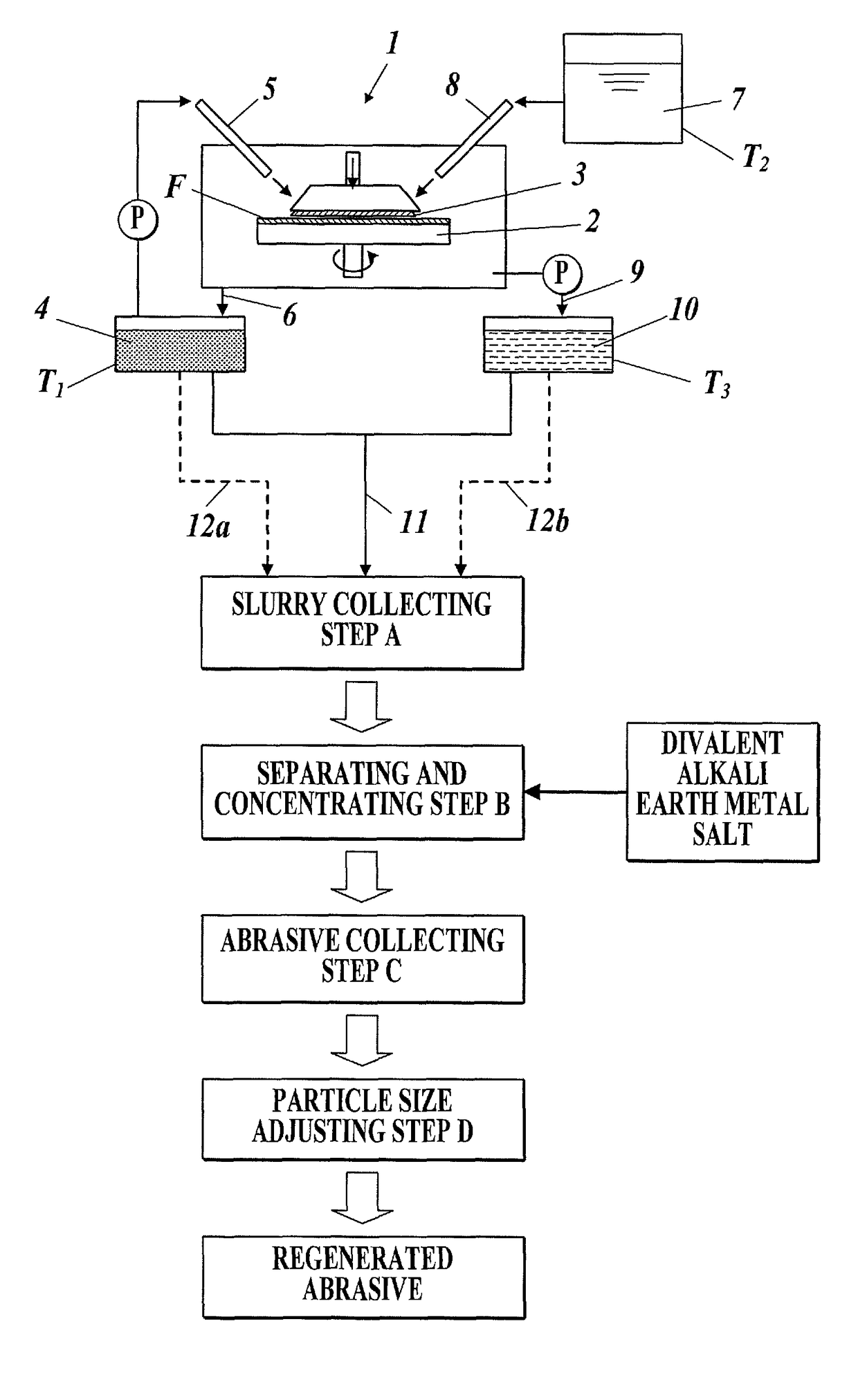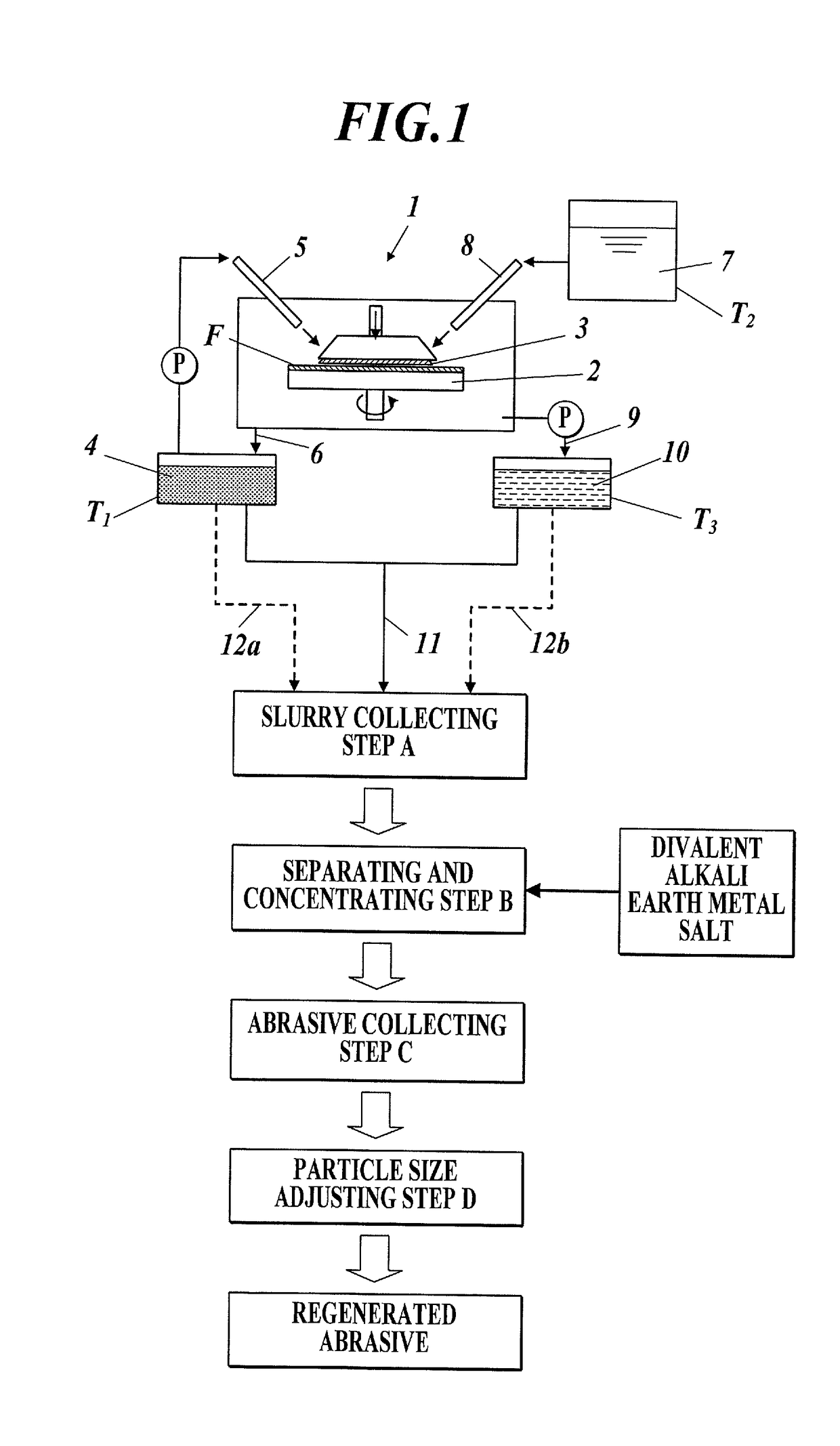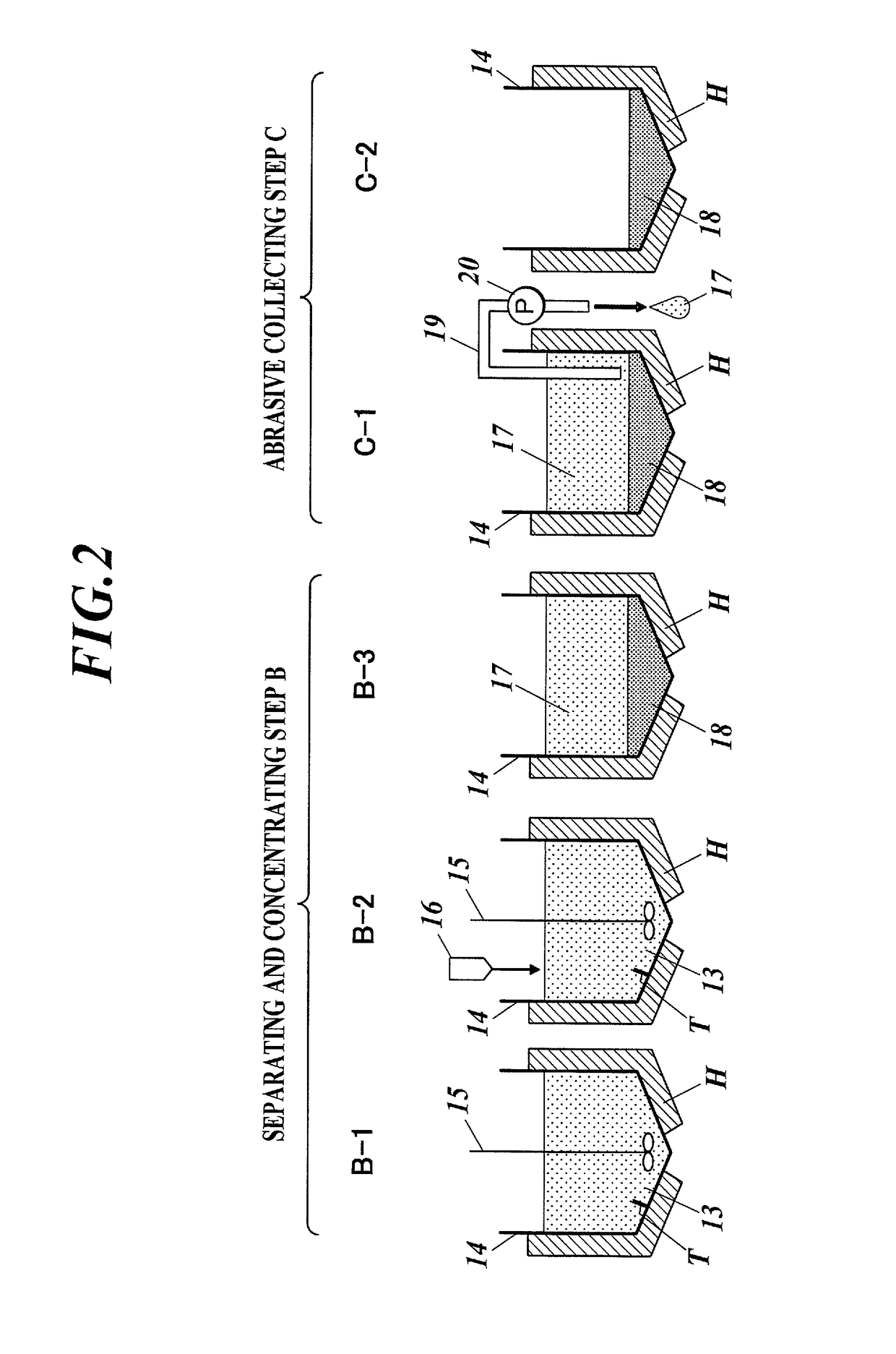Method for separating polishing material and regenerated polishing material
a technology of polishing material and regenerated polishing material, which is applied in the direction of sustainable manufacturing/processing, separation process, and other chemical processes, can solve the problems of insufficient purity of collected abrasives, environmental burdens and disposal costs, and difficult to efficiently separate abrasives from components derived from polished objects, etc., to achieve high purity, increase the collection yield of cerium oxide, and efficient and economical manner
- Summary
- Abstract
- Description
- Claims
- Application Information
AI Technical Summary
Benefits of technology
Problems solved by technology
Method used
Image
Examples
example
[0145]The present invention will now be described in detail with reference to Examples, but the present invention is not limited thereto. The percent sign “%” in the following description means “% by mass” unless described otherwise.
[0146]>
Preparation of Regenerated Abrasive 1: Present Invention
[0147]A regenerated abrasive 1 was prepared through the following steps.
[0148]1) Slurry Collecting Step A
[0149]After a glass substrate for a hard disc was polished as a polishing process illustrated in FIG. 1, 210 liters of the first abrasive-containing slurry which contained the washing water and 30 liters of the second abrasive-containing slurry which had been used were collected, and then mixed to obtain 240 liters of the collected slurry in total. The specific weight of this collected slurry was 1.03, and the collected slurry contained 8.5 kg of the cerium oxide.
[0150]2) Separating and Concentrating Step B
[0151]Subsequently, the collected slurry was transferred to a separation container. ...
PUM
| Property | Measurement | Unit |
|---|---|---|
| temperature | aaaaa | aaaaa |
| temperature | aaaaa | aaaaa |
| temperature | aaaaa | aaaaa |
Abstract
Description
Claims
Application Information
 Login to View More
Login to View More - R&D
- Intellectual Property
- Life Sciences
- Materials
- Tech Scout
- Unparalleled Data Quality
- Higher Quality Content
- 60% Fewer Hallucinations
Browse by: Latest US Patents, China's latest patents, Technical Efficacy Thesaurus, Application Domain, Technology Topic, Popular Technical Reports.
© 2025 PatSnap. All rights reserved.Legal|Privacy policy|Modern Slavery Act Transparency Statement|Sitemap|About US| Contact US: help@patsnap.com



